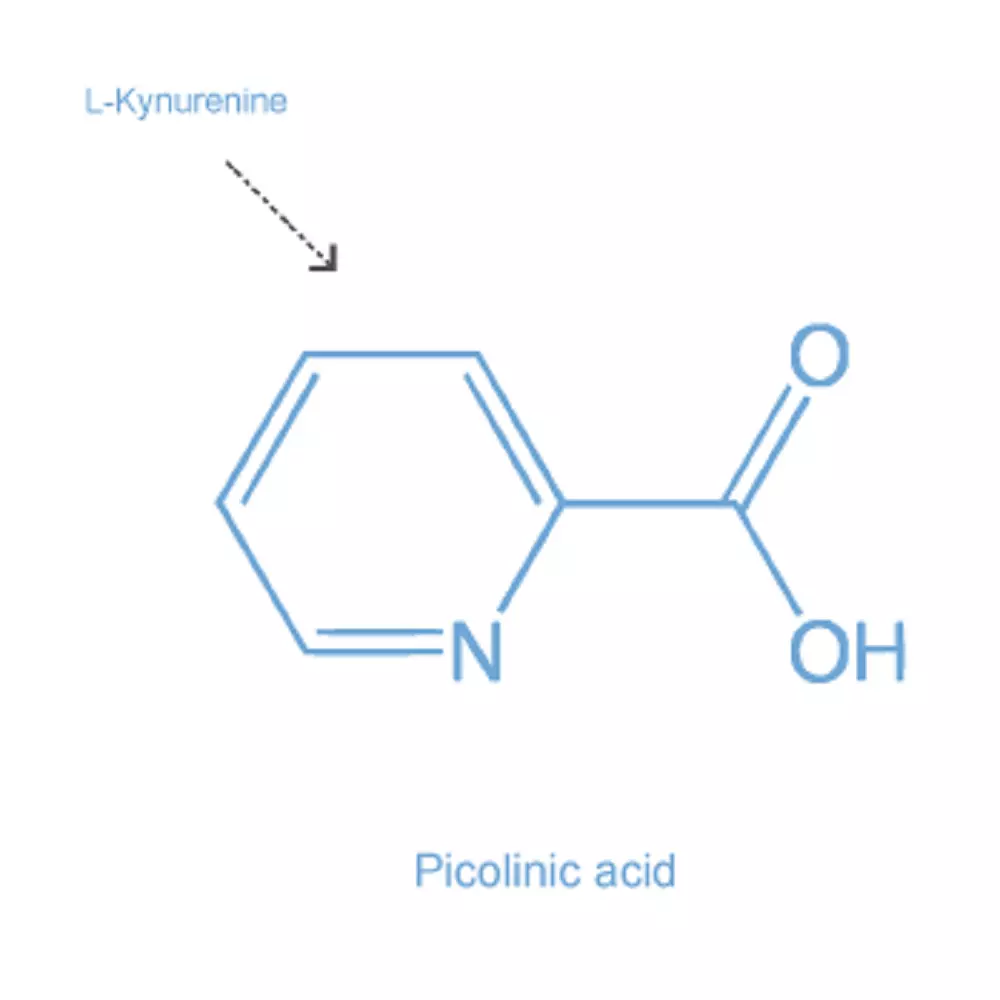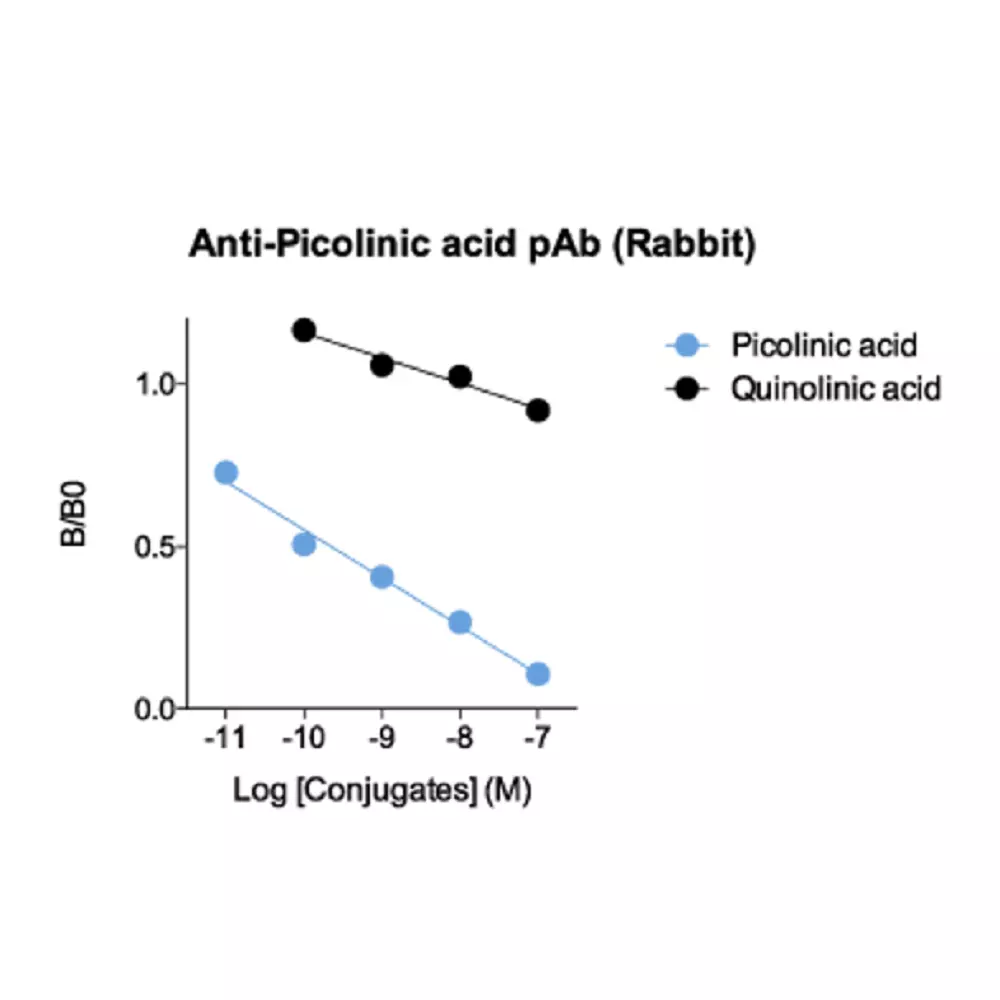Picolinic acid Antibody – Rabbit Polyclonal
Ref: IS1015
NeuromediatorsKynurenine pathwayTryptophan metabolismPolyclonal AntibodiesICCIFIHC
 +
+Picolinic acid
Picolinic acid is an isomer of nicotinic acid produced through the degradation of L-Tryptophan along the kynurenine pathway. Mostly studied for its chelating properties in the human body, Picolinic is also known for its role in immune response and neuroprotection. The metabolite, which induces macrophage activation through macrophage inhibitory protein- (MIP-) 1α and MIP-1β, was indeed found to exert antimicrobial and antiviral effects. In the brain, it was demonstrated to protect cholinergic neurons from quinolinic acid-induced neurotoxicity.
DatasheetMSDS
This is the first and only anti-Picolinic acid antibody available for research use. Confirmed to be highly specific and affine by competitive ELISA, this rabbit polyclonal antibody is undergoing validation for IHC and IF use.
| Clonality | Polyclonal |
| Host | Rabbit |
| Applications | IHC / IF |
| Reactivity | Reacts with all species |
| Format | 50µl |
| Size | 50µg |
|---|
440.00€
100 in stock
Worldwide shipping
Product overview
| Product name | Picolinic acid antibody |
| Synonyms | Pyridine-2-carboxylic acid antibody |
| Immunogen | Conjugated picolinic acid |
| Specificity | When tested in competitive ELISA, the anti-Picolinic acid antibody did not show any significant cross reactivity with analog Quinolinic acid |
Storage
| Form | Liquid |
| Purity | Purified anti-serum |
| Storage | Store at 4°C |
| Storage buffer | Store at +4°C for short term (1-2 months). Aliquot and store at -20°C for long term. Avoid repeated freeze / thaw cycles |
| Material safety datasheet | Download MSDS |
| Immunocytochemistry(ICC) | Dilute at 1:200-1:2000. Perform heat antigen retrieval (pH=6) before initiating IHC staining protocol on paraffin-embedded and frozen sections |
| Immunohistochemistry (IHC) | Dilute at 1:100-1:1000 on paraffin-embedded and frozen sections. Perform heat antigen retrieval and incubate with fluorescent secondary antibody conjugate |
| Immunohistofluorescence (IHF) | Dilute at 1:100-1:1000 on paraffin-embedded and frozen sections. Perform heat antigen retrieval and incubate with fluorescent secondary antibody conjugate |
| Comments | Optimal working dilutions must be determined by the end-user |
| Restrictions | For research use only |
Selected publications about Picolinic acid:
- Zavitsanou K et al. Effect of maternal immune activation on the kynurenine pathway in preadolescent rat offspring and on MK801-induced hyperlocomotion in adulthood: Amelioration by COX-2 inhibition. Brain Behav Immun. 2014 May 27. pii: S0889-1591(14)00133-0. doi: 10.1016/j.bbi.2014.05.011.
- Reyes Ocampo J et al. Kynurenines with neuroactive and redox properties: relevance to aging and brain diseases. Oxid Med Cell Longev. 2014;2014:646909. doi: 10.1155/2014/646909. Epub 2014 Feb 17.
- Zuwala-Jagiello, J et al. Picolinic Acid in Patients with Chronic Hepatitis C Infection: A Preliminary Report. Mediators Inflamm. 2012;2012:762863. doi: 10.1155/2012/762863. Epub 2012 Apr 10.





